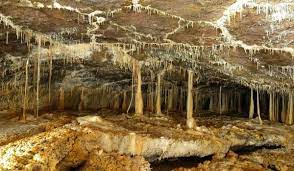Description

Copyright infringement is not intended
Context: Ministry of Mines has approached Ministry of Culture to explore the possibility of inclusion of Geological Heritage sites declared by GSI, under the purview of existing Ancient Monuments and Archaeological Sites and Remains Act 1958 (amended in 2010) by making suitable amendment in the Act.
- Geological Survey of India (GSI) has identified two geological heritage sites in the Indian Himalayan Region of India.
- The details of the two sites identified by GSI in the Himalayan Region are as follows:
|
State
|
Name of the
Site
|
Location
|
Brief description of the site
|
|
Himachal Pradesh
|
Siwalik Fossil Park,
|
Saketi,
Sirmur
District
|
The Siwalik Fossil park displays a rich collection of vertebrate fossils recovered from the Siwalik rocks of the area of Plio-Pleistocene age. The deposition of Siwalik sediments took place in the narrow linear depression, called the 'fore deep', which started developing in front of the Himalayas since the inception of its uplift in the middle Miocene
|
|
Sikkim
|
Stromatolite
bearing
Dolomite /
Limestone of Buxa
Formation
|
Mamley, near
Namchi, South
District
|
The Geoheritage site at Mamley exposes lithounits of Buxa Formation, Daling Group of Proterozoic age. The dolostones are profusely stromatolitic (Precambrian algal structures). This site provides one of the rare examples of early life in Sikkim Himalaya.
|
- These two geological heritage sites of Indian Himalayan region are not on the verge of disappearance. These sites are preserved in the respective States.
Geo Heritage Site by the Geological Survey of India:
- Geological sites are a record of important geological phenomenon that are a key to trace the evolutionary history of earth and its changing processes
- The term geological heritage is used for natural geological or geo-morphological features that have aesthetic, intrinsic or scientific and educational value, that provide unique insight into geological processes affecting the formation or evolution of Earth.
- Culturally significant geo heritage sites are places in which geologic features or landscapes played a role in cultural or historical events.
- Aesthetically significant geo heritage sites are landscapes that have a visual appeal because of their geologic features or processes.
- Geological Survey of India (GSI) declares geo heritage sitesfor protection and maintenance.
- Globally, geo parks are sustained through geo tourism activities like excursions, Nature trails, guided tours, hiking and academic meets.
- While there are 147 UNESCO Global geoparks spread across 41 countries, India is yet to have one of its own.
- The scope in India is immense — Visakhapatnam alone is replete with many unique sites.
- India is pushing to get recognition of a geo park for Visakhapatnam consisting of Erra Matti Dibbalu (red sand dunes), natural rock formations at Mangamaripeta, million-years-old Borra Caves and volcanic ash deposits said to have originated from the volcanic eruption of Toba in Indonesia 73,000 years ago near Araku.
- Among the 34 notified National Geological Heritage Monument Sites of India by the Geological Survey of India, is the Erra Matti Dibbalu.
https://www.pib.gov.in/PressReleasePage.aspx?PRID=1811458











